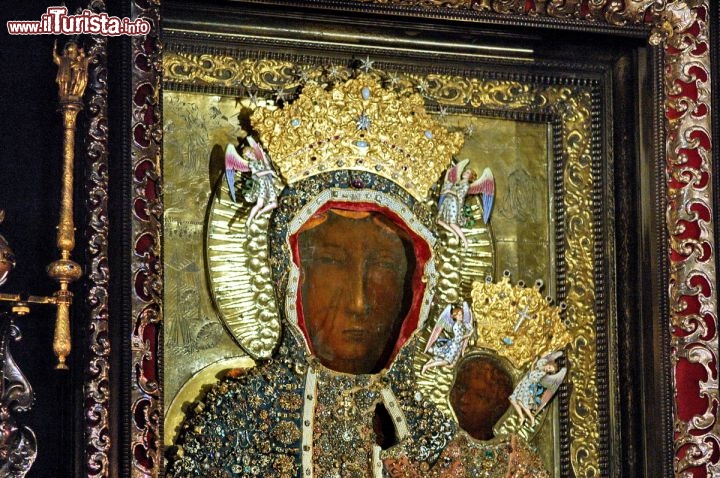Today is the MADONNA DI CZESTOCHOWA. Prayer to ask for a grace
O Chiaromontana Mother of the Church,
with the choirs of angels and our patron saints,
we humbly bow down to Your throne.
For centuries you have shone with miracles and graces here at
Jasna Gòra, seat of Your infinite mercy.
Look at our hearts that present you the tribute
of veneration and love.
Awaken within us the desire for holiness;
make us true apostles of faith;
strengthen our love for the Church.
Get us this grace that we so desire: (expose the grace)
O Mother with a scarred face,
in Your hands I place myself and all my loved ones.
In you I trust, sure of your intercession with your son,
to glory of the Holy Trinity.
(3 Hail Marys).
Under your protection we take refuge,
o Holy Mother of God: look to us who are in need.
Our Lady of the Luminous Mountain, pray for us.
The Częstochowa Shrine is one of the most important Catholic worship centers.
The sanctuary is located in Poland, on the slopes of Mount Jasna Góra (light, bright mountain): here the icon of the Madonna of Częstochowa (Black Madonna) is kept.
Tradition has it that it was painted by Saint Luke and that, being contemporary to the Madonna, he painted its true face. According to art critics, the painting by Jasna Gòra was originally a Byzantine icon, of the genre "Odigitria" ("She who indicates and guides along the way"), dating from the sixth to the ninth century. Painted on a wooden board, it depicts the bust of the Virgin with Jesus in her arms. Maria's face dominates the whole picture, with the effect that whoever looks at it finds himself immersed in Maria's gaze. Even the face of the child is turned to the pilgrim, but not his gaze, is somehow fixed elsewhere. Jesus, dressed in a scarlet tunic, rests on the left arm of the Mother. The left hand holds the book, the right is raised in a gesture of sovereignty and blessing. The right hand of the Madonna seems to indicate the Child. On Mary's forehead a six-pointed star is depicted. Around the faces of the Madonna and Jesus stand the haloes, whose brightness contrasts with the complexion of their faces. The right cheek of the Madonna is marked by two parallel cuts and a third that crosses them; the neck has six other scratches, two of which are visible, four barely noticeable.
These signs are present because in 1430 some followers of the heretic Hus,
during the Hussite wars, they attacked and preyed on the convent.
The painting was torn from the altar and brought out in front of the chapel, cut with a saber in several parts and the sacred icon pierced by a sword. Severely damaged, he was therefore transferred to the municipal seat of Krakow and subjected to a completely exceptional intervention for those times, when the art of restoration was still in its infancy. Here is how it is explained that still today the scarring of the face of the Holy Virgin is visible in the picture of the Black Madonna.
Since the Middle Ages the pilgrimage on foot has taken place from all over Poland to the Shrine of Częstochowa which runs from June to September, but normally the chosen period is around August. The pilgrimage on foot lasts several days and pilgrims also travel hundreds of kilometers along over 50 routes from all over Poland, the longest of which is 600 km.
This pilgrimage was also made by Karol Wojtyła (John Paul II) in 1936 starting from Krakow.
